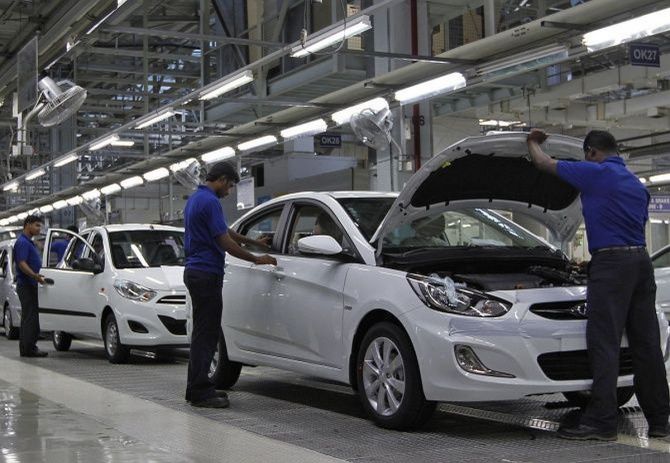Automobile (auto) retail sales in India grew by an impressive 14 per cent in July compared to the same period last year, driven by a surge in the rural economy, good product availability, and product launches.

While passenger vehicles (PVs) saw a 10 per cent increase during this period, inventory levels have surged to a historic high of 67-72 days in PVs, equating to Rs 73,000 crore worth of stock, according to the Federation of Automobile Dealers Associations (Fada).
This poses a risk to dealer sustainability. Inventory levels in July 2023 were only 50-55 days, equating to a stock worth Rs 49,833 crore. In June 2024, inventory was between 62 and 67 days, with a stock value of Rs 60,000 crore.
“As a market, we are doing well. Our biggest concern is inventory, which is the highest ever.
"We are highlighting this to our original equipment manufacturer (OEM) partners. Earlier, inventory pile-ups used to occur for small cars; now they are happening across segments, including sport utility vehicles,” said C S Vigneshwar, vice-president of Fada.
The rise in retail numbers for July was marked by a sharp increase in two-wheeler (2W) sales, which grew by 17 per cent, PVs by 10 per cent, three-wheelers by 13 per cent, and commercial vehicles (CVs) by 6 per cent.
However, tractors continued to underperform, falling by 12 per cent year-on-year (Y-o-Y).
Sequentially, auto sales saw a 7.3 per cent jump. In June, there was a modest 0.73 per cent Y-o-Y growth in sales.
“The 2W segment saw considerable growth due to a thriving rural economy, positive monsoon effects, and government support programmes enhancing rural incomes.
"The introduction of products and improved stock availability also played a key role, despite market slowdowns in certain regions, excessive rains, and heightened competition,” said Vigneshwar.
The segment also saw an increase in EV sales due to discounts and the Electric Mobility Promotion Scheme deadline.
In the 2W segment, almost all players displayed healthy growth, including market leader Hero MotoCorp (10 per cent), Honda Motorcycle and Scooter India (23 per cent), 2TVS Motor Company (18 per cent), and Bajaj Auto (10 per cent).
PV sales saw robust growth, driven by model launches and attractive pricing strategies.
“Dealers reported benefits from good product availability, attractive schemes, and a wider range of products.
"Nonetheless, heavy rains, weak consumer sentiment, and intense competition posed challenges.
"Some dealers managed to sustain sales through strong promotions and incremental discounts,” he added.
However, Fada urged PV OEMs to be vigilant about potential dealer failures due to high inventory levels.
It is also crucial for the Reserve Bank of India to mandate financial institutions to implement stringent checks before releasing inventory funding, preferably requiring dealer consent or collateral to prevent the escalation of non-performing assets, Fada said.
CV retail sales showed a 6 per cent Y-o-Y growth, with dealers reporting mixed sentiment.
Positive factors included growth in the construction and mining sectors, while challenges such as continuous rainfall, negative rural market sentiment, poor finance availability, and high vehicle prices were also observed.
Some dealers achieved growth through small bulk deals and leveraging increased market reach and product acceptability.
Vigneshwar added that following a deficient June, monsoons in India have intensified, resulting in above-normal cumulative rainfall for July.
However, the geographical distribution was uneven, with Southern and Central India receiving excess rain, while 10 meteorological divisions experienced a double-digit deficit.
“Kharif sowing has increased by 2.3 per cent since last year, but these figures are somewhat misleading due to poor sowing activity in the previous year caused by El Niño disruptions. Compared to July 2023, the sown area has decreased by 2.4 per cent,” he said.












 © 2025
© 2025